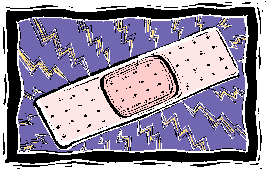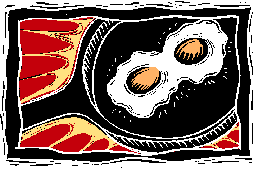

Currently doctors use high-intensity, focused ultrasound to kill unwanted tissue, such as a tumor. While using the technology, they found that blood in the surrounding area undergoes changes that stimulate coagulation.
Over the next five years, UW researchers want to develop technology using ultrasound to pinpoint and image the exact places where internal bleeding occurs and then, by increasing the amplitude of the sound wave, to stimulate coagulation.
"It could lead to new kinds of emergency treatment at the scene of an injury," says the project's lead scientist, Larry Crum of the UW Applied Physics Laboratory. The laboratory is working with the UW School of Medicine and a private firm to perfect the technique.

The ongoing study of more than 1,000 fourth through seventh graders found that children's beliefs about alcohol, drugs and tobacco shift incrementally. "As children become older, they see more nuance and realize that there are shades of gray. The trouble with a lot of anti-drug and tobacco messages is that they tend to be black and white," says UW Social Work Professor Mary Gillmore.
"Kids may ignore negative, one-sided messages as they begin to realize some issues are more complicated," she continues. "This reminds me of Mark Twain's statement that `When the clock strikes 13, not only do you doubt it, but it also casts doubt on the previous 12 rings.' "
Researchers emphasize the need to discuss realistic probabilities with teen-agers and to avoid messages that portray extreme consequences. "A perfect example is the `fried-egg' ad--`This is your brain. This is your brain on drugs.'--from the 1980s. It's an extremely strident message and probably not that effective because older children know people who use drugs and whose brains are not fried," Gillmore adds.

A study led by Atmospheric Sciences Professor John Wallace looked at almost a century of Northern Hemisphere temperature records. Between 1975 and 1990 there was a 0.3 degree Celsius increase in the temperature of the atmosphere. The study found that natural changes in atmosphere circulation appear to have caused a third of that warming.
For almost the entire century (1900-1990), the circulation patterns may account for nearly half the Northern Hemisphere's month to month variations.
The study highlights uncertainties in global warming assessments by the United Nations and others reported in recent news accounts. "While human activity may well also have contributed to the overall warming, we think that a significant part of the change is due to natural causes that have nothing to do with greenhouse warming," Wallace says.